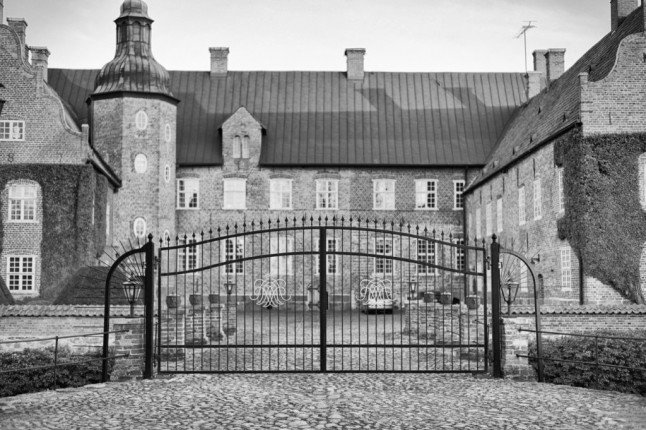
14th & 15th Centuries
Originally the estate was known simply as Ljungby. In the 1300s and 1400s it was mentioned under this name as the family seat for several generations of the Bille family. Some time in the 1460s Ljungby was sold to Henrik Brostrup and it was from Brostrup’s son that Jens Holgersen Ulfstand (the man who commissioned the building of Glimmingehus Castle) later purchased the property. Unfortunately, it is not possible to ascertain what the building looked like at that time.
16th Century
It is thought that by the early 1500s there were two permanent buildings here; one at the south-west corner of the courtyard and a second along the eastern side. Following the marriage of Jens Holgersen Ulfstand’s daughter, Sissela, to Knud Gyldenstierna, the Ljungby estate passed into the Gyldenstierna family. In 1525 the house was burned to the ground during an uprising led by the Danish freebooter Sören Norby. However, Sissela oversaw the rebuilding and extension of the property and, after Knud’s death in 1552, she continued to manage the estate on her own for 23 years until she died in 1575.
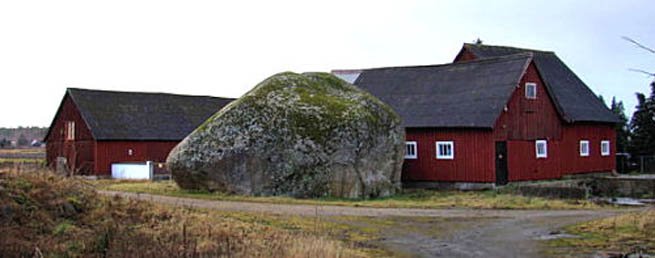
Maglestenen and the ”Ljungby horn and pipe”
Next to a barn on the Trolle Ljungby estate is a gigantic stone – a so called erratic boulder – known as Maglestenen or “the Great Stone”. According to a local legend the boulder was hurled there by a troll in a vain attempt to destroy the church in Åhus. The stone was also said to be the home of trolls, who gathered there for a feast each year on Christmas Eve when the boulder was miraculously raised aloft on columns of gold. The legend tells how the widowed Sissela Ulfstand was curious to get to the bottom of this tale, so one Christmas Eve she sent one of her servants to the stone to find out more.
When the man came to the stone the trolls were indeed partying beneath it. He was even invited to drink a toast with them from their drinking horn and to play a tune on the trolls’ pipe. Wise to the tricks of the trolls, however, he threw the contents of the horn over his shoulder, jumped on his horse and galloped back to the castle, still clutching the horn and pipe in his hand. The furious trolls followed close on his heels, but by riding across a ploughed field at right angles to the furrows, the wily servant and his horse left a track of hoof prints that resembled the cross of Christ. Unable to follow this sacred path, the heathen trolls were instead forced to race up and down the many furrows in the field. The servant was thus able to reach the castle and close the gate before they could catch him. The trolls hammered and pulled at the great door, but to no avail. On realising that they could not open the gate to retrieve their horn and pipe, they avenged their loss by putting a curse on the place.
The legend tells that both the servant and the horse he had ridden on died soon after, that the castle would be destroyed three times by fire and Sissela’s family would die out. The horn and pipe, however, remain at Trolle Ljungby and can still be seen there today.
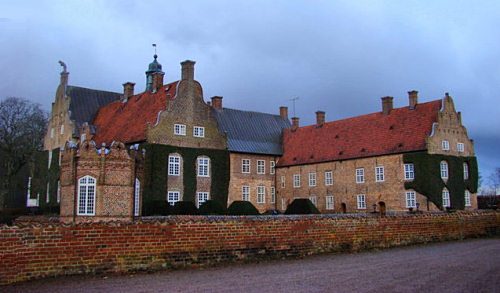
17th Century
Sissela’s grandson, Knud Gyldenstierna, inherited Ljungby at the age of 48 in 1621 and immediately began work to remodel and extend the property. Between 1629 and 1633 he added an extension to the eastern end of the old building at the south-west corner of the courtyard and linked the new addition to the “Monks’ Wing” by erecting a tower on the courtyard side. The new extension had two storeys and on one of the gables you can still read the year of construction, 1629, and the initials KGS and ØHF. The latter are the initials of Knud’s wife, Öllegård Huitfeldt. A few years later a new, two-storey west wing was completed and embellished with the same initials and the year 1633.
Gyldenstierna also built a brick barn. This was built around an open courtyard facing the castle and the wings extended all the way to the castle moat. The eastern part of the barn is still standing and bears the date 1636.
A little over 40 years later, during the Scanian War that raged from 1674 to 1679, so called “snapp-hane men” (Swedish rebels loyal to the Danish crown) attacked Ljungby. They set fire to and partially destroyed the barn, which was, however, soon rebuilt. Tradition has it that the snapp-hane men also fought their way into the courtyard. Today you can still see sword marks and holes made by musket balls in the oak door of the tower, damage that is said to have been sustained in the attack. During the course of the war Sweden’s King Karl XI set up his winter quarters in Ljungby and in nearby Råbelöv.
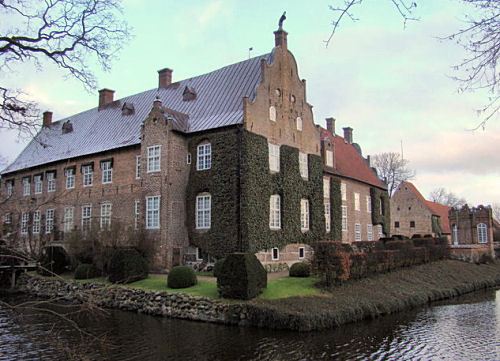
By now, however, a new family had taken ownership of Ljungby. Peter Julius Coyet bought the estate in 1662. The 44-year-old Coyet was a successful lawyer who had served as Chief Magistrate for the District of Tjurbo (1650), as Ambassador on various occasions to both England and Holland, as State Secretary, and as Chief Negotiator in the peace talks with Denmark in 1658, with England in Helsingör in April 1659 and with Holland in May of the same year. In addition to these prestigious posts, he also found time to serve as an Under-Secretary and a member of the Royal Banking Commission. He was made a Knight of the Garter in 1656.
His son, Wilhlem Julius Coyet, Chief Judge for the counties of Skåne and Blekinge and a Court Chancellor, was created a baron in 1706. In 1667 he had chaired one of Sweden’s last official enquiries into witchcraft. It is reported that initially he was ruthless in his pursuit of women accused as witches, but he gradually adopted a more lenient attitude.
Wilhelm Julius was also the first to produce a written record of the Legend of the Horn and Pipe; his original manuscript is still preserved in the castle.
He took possession of Ljungby following the death of his father in 1667. Towards the end of the seventeenth century he built a high protective wall with embrasures on the north side of the courtyard and a defensive gatehouse to protect the drawbridge. In the barn that had been burned down by the snapp-hane rebels, Wilhelm Julius built a half-timbered threshing house. On the west side he erected a building to balance the symmetry of the construction on the east: the initials WJC EGS and the date 1700 can be seen on the gable. EGS are the initials of his second wife, Elisabeth Gyllenstierna.
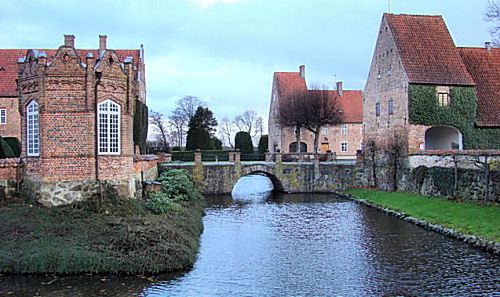
18th Century
In 1787 work started on the reconstruction of the east wing that had been torched in the snapp-hane uprising. The fact that this was known as the “Monks’ Wing” suggests that there may well have been a building of some sort here at a much earlier date.
1830 – From Ljungby to Trolle-Ljungby
In 1804 Ljungby was inherited by Ulrika Lovisa Maria Sparre, née Coyet. When she married Count Carl Axel Trolle-Wachtmeister the Ljungby estate passed into the ownership of this family. The couple’s son, Hans Gabriel Trolle-Wachtmeister, held the entailed estate of Trolleberg, but in 1830 he was granted permission to transfer the entailment from Trolleberg to Ljungby, which then acquired the official name of Trolle Ljungby.
1900 to present day
Today Trolle Ljungby remains in the private ownership of the Wachtmeister family and is not open to the public. However, the famous Horn and Pipe are displayed in a window in the castle every Wednesday and Saturday from 1st June to 31st August each year. At these times visitors are also welcome to visit the gardens.